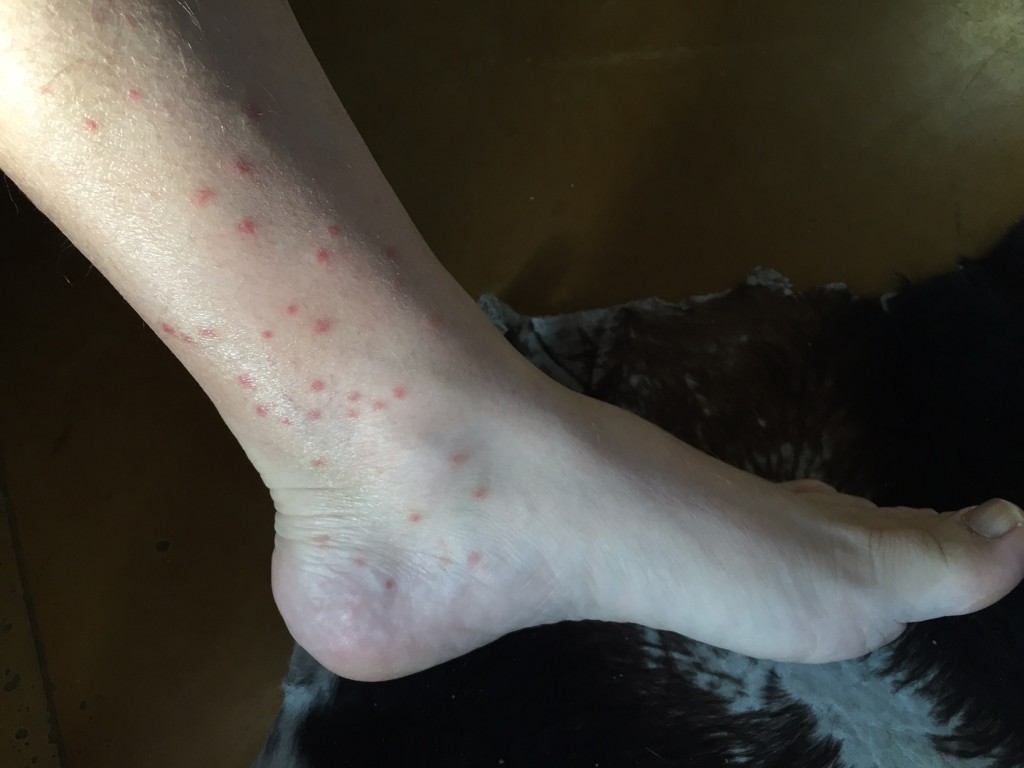
I didn’t feel anything bite, didn’t see any sign of bugs flying around- I was just outside talking on the phone getting ready to jump in the pool with my son. That evening, I felt a little itch, but at 4 am woke up with an intense need to scratch my ankles.
Turns out it was an infestation of “chiggers” or Trombiculidae, a small mite- that is found on leaves of grass. So what happened? How did I become the victim of these evil mini dracula-like bugs? Chigger larvae pierce a person’s skin and inject the person with digestive enzymes. The enzymes break down skin cells that the larvae ingests; the tissues become liquefied and the larvae sucks up this bloody cocktail. Believe it or not, the enzymes are a protein that some people (like me) are highly allergic to, causing an irritating appearance of a bite. What then happens is those enzymes cause surrounding tissues to harden and form a straw-like tube of hardened flesh called a, ‘stylostome,’ which the larvae uses to suck further digested skin cells. Are you totally grossed out yet? I am and still itchy.
The larvae feeds for four days, and once it has fully-fed, drops from its host, leaving a red welt with a hard, white center on the skin that itches severely and has the potential to develop dermatitis. These mites do not spread any forms of disease in America. The majority of chigger bites occur around a person’s ankles, groin, crotch area, in a person’s arm pits, or behind the person’s knees. When walking on lawns they will quickly attach to ankles. Clothing can form a barriers to migration on a person’s skin, such as belts. This is why chigger bites are also common around a person’s ankles, waist, or in other areas of a person’s body where migration is prevented due to compression from clothing.
The bite from a chigger itself is something that is not noticeable. Once a chigger has started to inject digestive enzymes into the person’s skin, often within one to three hours, the person begins to experience symptoms. Much like I did.
What to do:
They can be washed off with hot soapy water – and clothing when in those areas should be washed in hot water and left in the hot Phoenix Sun (or a really good dryer). So if you experience this- contact your pest control people who can rid this. Otherwise- best to use DEET or other agents that will prevent the mites from bothering you. Still wash clothing quickly and take some hot showers after being in the lawn.
Treatment:
I found that benydryl spray worked best to relieve symptoms- but also mild anti-itch agents such as hydrocortisone cream worked well. In addition I took Zyrtec to minimize the local symptoms. It helps to spray yourself with OFF before going out on the lawn if you are prone to this allergy.
Ugh, it ain’t pretty.
Thinking artificial lawn now.
